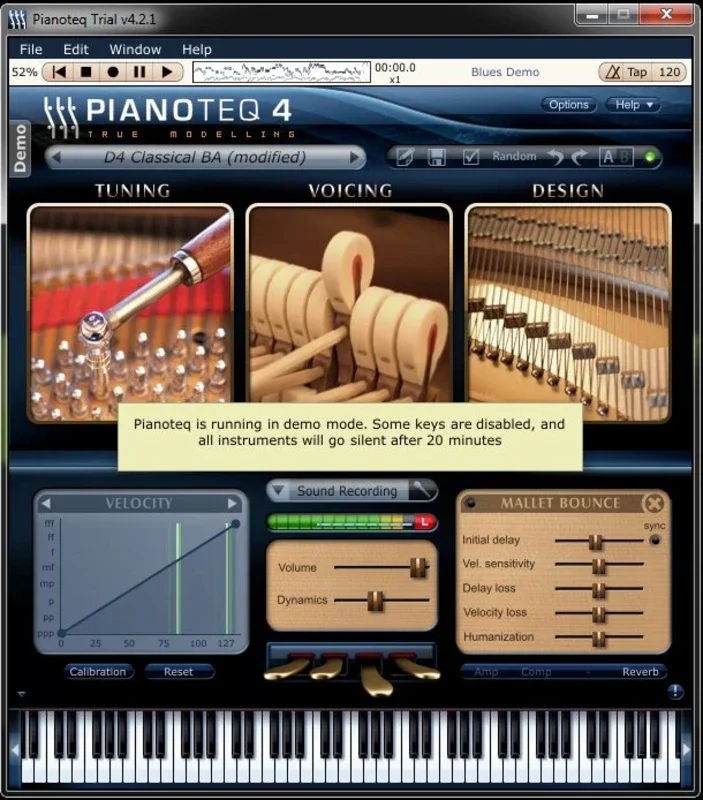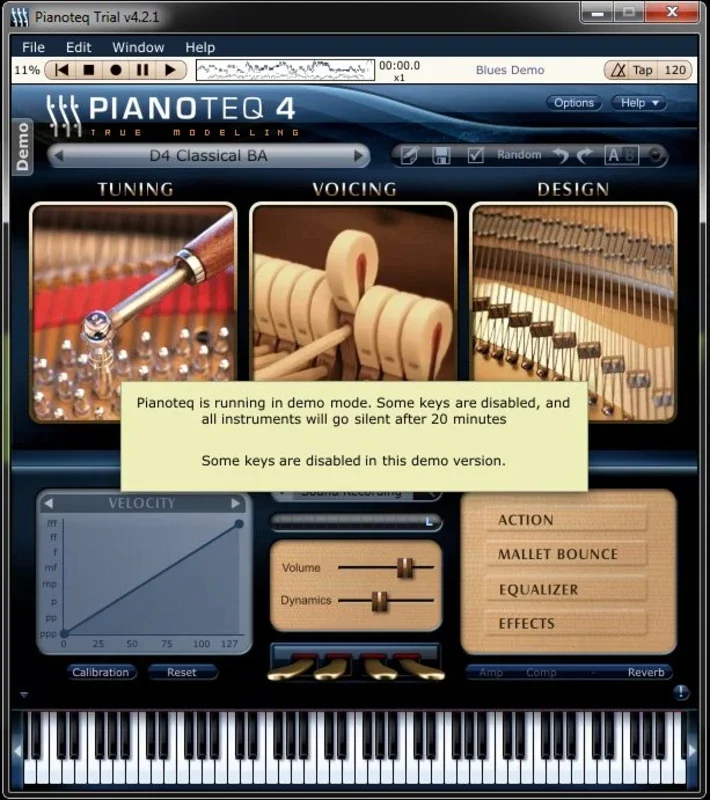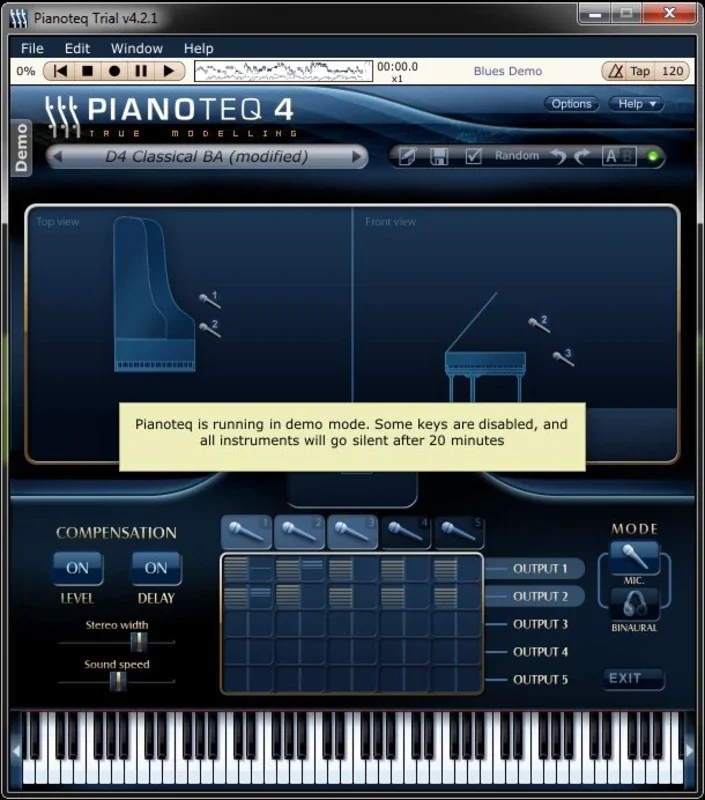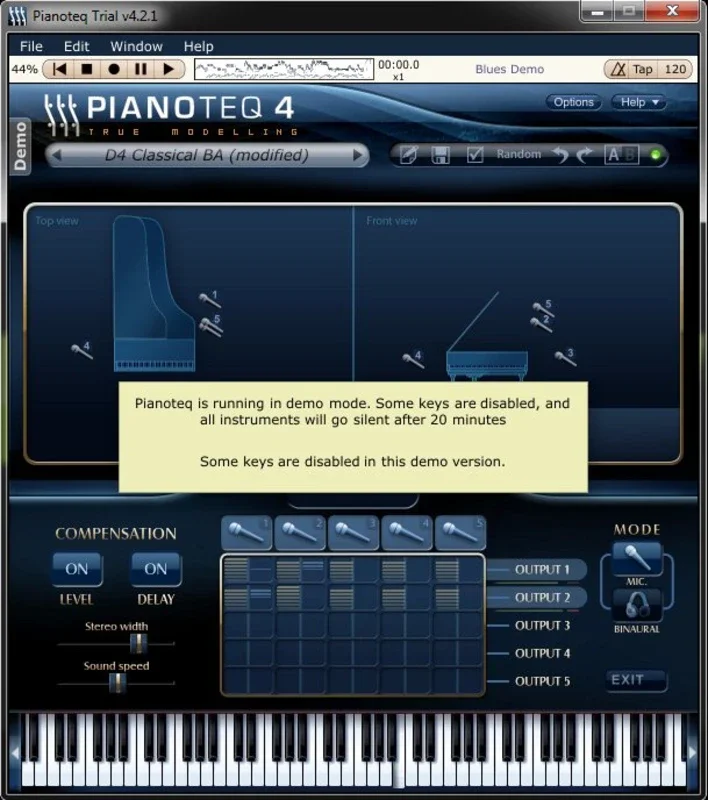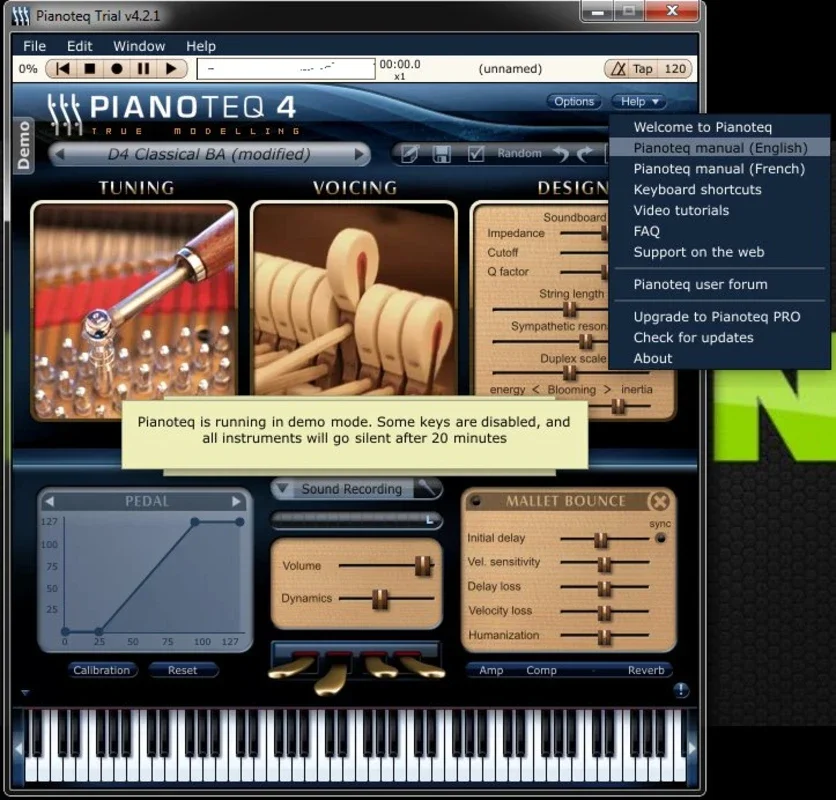Pianoteq App Introduction
Introduction
Pianoteq has emerged as a remarkable software in the realm of virtual pianos. It represents a significant leap forward in the technology used to create and experience piano sounds. With its fourth version, Pianoteq continues to set new standards.
The Technology Behind Pianoteq
Pianoteq 4 is based on physical modeling of instruments. This means that it doesn't rely on pre - recorded samples like some other virtual piano software. Instead, it simulates the actual physical properties and behaviors of real acoustic pianos. This approach allows for a much more dynamic and realistic sound production. For example, when a key is pressed, the software calculates how the strings would vibrate, how the sound would resonate within the piano's body, and how different components would interact. This is in contrast to sample - based pianos where the sound is simply a playback of a pre - recorded note.
The sound engine of Pianoteq 4 is highly sophisticated. It can accurately reproduce the complex resonances that are characteristic of a real piano. These resonances include not only the basic sound of the struck string but also the secondary resonances that occur within the piano. For instance, the resonance of the harp - like structure inside the piano and the interaction of all its cords. It also takes into account the duplex scale, which is a unique aspect of piano acoustics. Additionally, it can mimic the muffling effect when a key is played, with different nuances of muffling depending on how the key is struck.
Features of Pianoteq 4
One of the standout features of Pianoteq 4 is its small size. It only takes up 20MB of disk space, which is quite remarkable considering the complexity of the sounds and functions it offers. This makes it very accessible for users with limited storage space or those who want a quick and easy installation.
Pianoteq 4 comes equipped with four pedals: the middle pedal, sostenunto pedal, harmonic pedal, and una corda pedal. These pedals play crucial roles in shaping the sound and expression of the piano. The middle pedal, for example, can be used for a variety of functions depending on the piano model being simulated. The sostenunto pedal allows for the sustain of notes even after the keys are released, adding a rich and continuous sound. The harmonic pedal creates a unique harmonic effect, and the una corda pedal softens the sound, giving a more mellow and subdued tone.
Another great feature is the ability to choose the position of the microphone and mix multiple channels. There are more than 5 microphones and 5 channels available for this purpose. This gives the user a great deal of control over the sound's spatial characteristics. It allows for a more immersive and personalized listening experience. For example, one can position the microphone closer to the strings for a more direct and bright sound or further away for a more ambient and reverberant sound.
Pianoteq 4 also includes an equalizer, key velocity connectors, and volume controls. The equalizer allows for fine - tuning of the sound frequencies, enabling the user to adjust the tone to their liking. The key velocity connectors are important for accurately translating the force with which a key is pressed on a MIDI - compatible keyboard into the appropriate volume and timbre of the sound. The volume controls range from pianissimo (very soft) to fortissimo (very loud), providing a wide dynamic range for the user to explore.
Comparison with Other Virtual Piano Software
When compared to other virtual piano software, Pianoteq 4 stands out in several ways. Many other virtual pianos rely on large sample libraries, which can take up a significant amount of disk space. In contrast, Pianoteq 4's small size is a major advantage. Additionally, the physical modeling technology used in Pianoteq 4 gives it a more natural and responsive sound compared to some sample - based pianos. The ability to customize the sound through features like microphone positioning and channel mixing is also not as commonly found in other virtual piano software.
Conclusion
Pianoteq 4 is a truly innovative software in the world of virtual pianos. Its use of physical modeling technology, combined with its array of features such as the four pedals, microphone and channel mixing, equalizer, and key velocity connectors, make it a top choice for both amateur and professional pianists. Whether you are looking for a realistic piano - playing experience on your computer or want to explore new sonic possibilities, Pianoteq 4 is definitely worth considering.
Pianoteq's Impact on Music Production
In the field of music production, Pianoteq 4 has had a significant impact. It has become a popular choice among composers and producers who need a high - quality piano sound in their tracks. The flexibility of the software allows for easy integration into different musical styles. For example, in a classical music production, the accurate reproduction of the piano's sound and the ability to control the nuances of playing through the pedals and key velocity are invaluable. In a more contemporary or pop - music setting, the unique sound - shaping features like the equalizer and microphone positioning can be used to create more experimental and unique piano sounds.
Pianoteq for Different Skill Levels
For beginners, Pianoteq 4 can be an excellent learning tool. The small size makes it easy to install on any computer, and the realistic sound can help beginners get a feel for playing the piano. The adjustable volume and key velocity settings can also be adjusted to match the skill level of the beginner, allowing for a more comfortable and enjoyable learning experience. For intermediate and advanced pianists, the advanced features such as the complex resonances and multiple - pedal functionality provide a more in - depth and nuanced playing experience. They can use these features to create more complex and expressive performances.
The Future of Pianoteq
As technology continues to evolve, it is likely that Pianoteq will continue to improve and innovate. The developers may further refine the physical modeling technology to make the sound even more realistic. There may also be new features added in the future, such as more advanced sound - shaping tools or even more detailed simulations of different piano models. With its strong foundation in technology and its growing user base, Pianoteq is well - positioned to remain at the forefront of virtual piano software for years to come.
